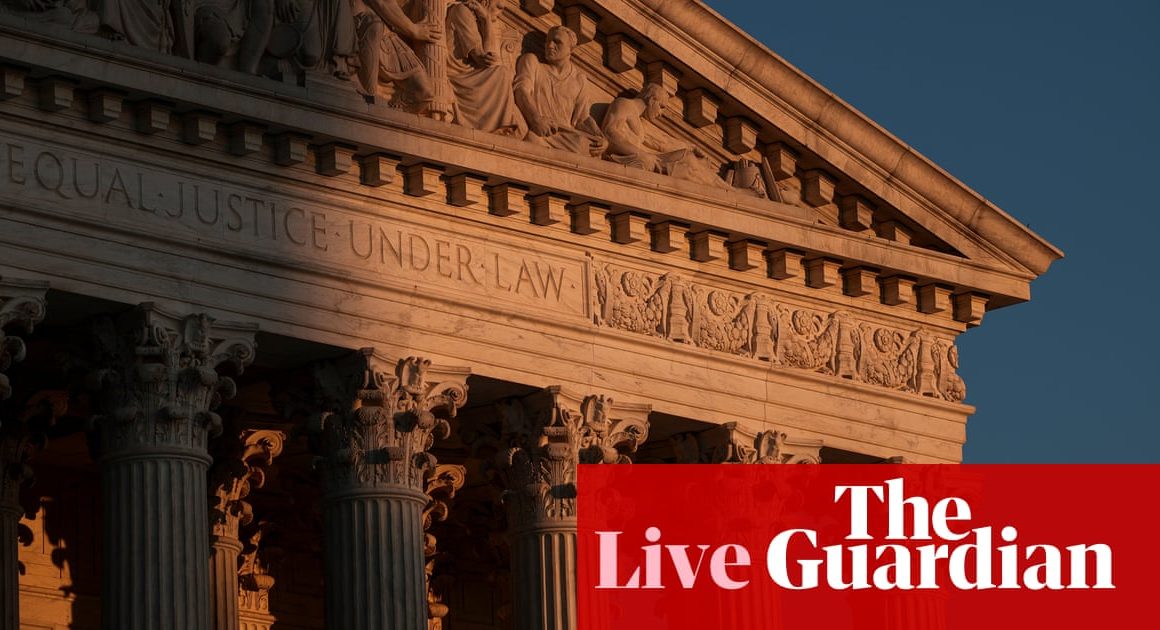Key events
Who is Ebrahim Raisi?

Peter Beaumont
Ebrahim Raisi is a hardliner who was instrumental in the last few years in steering Iran back towards the more uncompromising beliefs of the Islamic Republicâs revolutionary founders.
A supporter of deeply conservative values on the domestic front, in terms of foreign policy, Raisi also carved out an increasingly aggressive stance, and it was on his watch that Tehran opted to launch its recent unprecedented missile and drone strike against Israel bringing the two countries into direct and open conflict for the first time.
While he was elected president in June 2021, having represented himself as the best person to fight corruption and Iranâs economic problems, Raisi had long occupied important positions in Iran, including an alleged key role in the so-called Death Committee responsible for executing thousands of prisoners in the 1980s â a claim he has denied.
Born in 1960 into a clerical family in Mashdad, Raisi was a child of the revolution that overthrew the Shah after he had travelled to Qom to attend a Shia seminary at the age of 15, following in his fatherâs footsteps.
While still a young student, he joined the mass protests against the western-backed Shah in 1979 that would lead to the Islamic Revolution under the guidance of Ayatollah Ruhollah Khomeini, a cleric until his dramatic return from exile in France.
In the turbulent first years of the Islamic Revolution, the young Raisi continued with his studies at the Shahid Motahari University in Tehran, where he received a doctorate in Islamic jurisprudence and law.
Joining the judiciary, Raisi, aged just 25 â like many other young men of his generation â would find himself catapulted into important office, in his case as the deputy prosecutor of Tehran.
It was while still in that role, say human rights groups, that he became one of four judges sitting on the infamous Death Committee, a secret tribunal set up in 1988 to retry thousands of prisoners, many of them members of the Mujahedin-e Khalq group.

Patrick Wintour
The Iranian helicopter crash comes at a time when the country, faced by unprecedented external challenges, was already bracing itself for a change in regime with the expected demise in the next few years of its 85-year-old supreme leader, Ayatollah Ali Khamenei.
In the countryâs hydra-headed leadership where power is spread in often opaque ways between clerics, politicians and army, it is the supreme leader, and not the president, that is ultimately decisive.
The presidency, however loyal to the supreme leader â and Iranian president Ebrahim Raisi is considered very loyal to Khamenei â is often cast in the role as a useful scapegoat helping the supreme leader to avoid criticism. That certainly became the fate of Raisiâs predecessor Hassan Rouhani who became a punchbag for decisions taken elsewhere.
In recent months Raisi, elected president in 2021 but in practice handpicked by the supreme leader, has been mentioned as a possible successor to Khamenei. His death, if confirmed, would instead clear a thorny path for Khameneiâs son, Mojtaba Khamenei.
The choice is made by an 88-strong âassembly of expertsâ, and Raisiâs departure would certainly increase the chances of a hereditary succession in Iran, something many clerics oppose as alien to Iranâs revolutionary principles.
Full report: rescuers search for crashed helicopter carrying president and foreign minister
A helicopter carrying the Iranian president, Ebrahim Raisi, and his foreign minister crashed on a fog-covered mountainside, with search and rescue teams rushing to the area as state media called for nationwide prayers.
State TV reported that the helicopter had been found on Sunday evening, well after dark, and quoted an official as saying that at least one passenger and one crew member had been in contact with rescuers.
Still, details were scant and sometimes conflicting, including Iranian Red Crescent rescuers later saying no helicopter had been found.
With no published information of whether the president was alive or dead, the countryâs supreme leader, Ayatollah Ali Khamenei â who holds ultimate power in the Islamic Republic â sought to reassure the nation.
Iranians should not worry or be anxious, he said, adding: âNo disruption will occur in Iranâs state affairs.â
An Iranian official, however, had told earlier Reuters that the lives of Raisi and the foreign minister, Hossein Amir-Abdollahian â who was travelling with him â were âat risk following the helicopter crashâ. They added: âWe are still hopeful, but information coming from the crash site is very concerning.â
Opening summary
Hello and welcome to the Guardianâs live coverage of the search for Iranian President Ebrahim Raisi after a helicopter crash.
The Iranian leader was travelling in a mountainous area of East Azerbaijan province with foreign minister Hossein Amir-Abdollahian following a visit to neighbouring Azerbaijan to inaugurate a dam when the crash happened.
Iranian state media blamed bad weather for the crash, which was also described initially by media as a âhard landingâ, and said the conditions were complicating rescue efforts.
There have been conflicting reports on whether the helicopter has been found.
Here are the key developments:
-
Iranian state TV reported that the helicopter had been found by search teams. There was no update on the condition of those onboard. However, Iranâs Red Crescent later denied the state TV report. The location of the helicopter is still unknown.
-
The incident, which involved one helicopter in a convoy of three, was described by Iranian state television as an accident.
-
An unnamed Iranian official told Reuters that the lives of the president and his foreign minister were âat riskâ after a âcrashâ as it was crossing mountain terrain in heavy fog.
-
An unnamed Iranian official told state media that contact had been made on several occasions with a passenger and a crew member, but there have been no further updates.
-
Three rescue workers searching for the crashed helicopter were reported missing by the Red Crescent but were later accounted for. A spokesperson said the search and rescue operation will slow down as the weather is expected to get âseverely coldâ soon with more rain forecast. Other media reported that the rain was turning to snow.
-
Raisi was travelling in Iranâs East Azerbaijan province. State TV described the area of the helicopter incident as being near Jolfa, a city on the border with Azerbaijan. The president had been in Azerbaijan earlier on Sunday to inaugurate a dam with the countryâs president Ilham Aliyev. The dam is the third one that the two nations have built on the Aras River.
-
Iranâs army chief of staff, Maj Gen Mohammad Bagheri, said all army resources would be used for the search and rescue operations, state TV reported. Bagheri said military personnel along with the Revolutionary Guards and police had deployed teams to the area.
-
Iraq has instructed its interior ministry, the Red Crescent and other relevant bodies to offer help to neighbouring Iran and assist in the search. Turkey, Russia, Saudi Arabia, Qatar and the United Arab Emirates also offered support.
-
Iranian Supreme Leader Ayatollah Ali Khamenei, who holds ultimate power, sought to reassure Iranians, saying there would be no disruption to state affairs.








